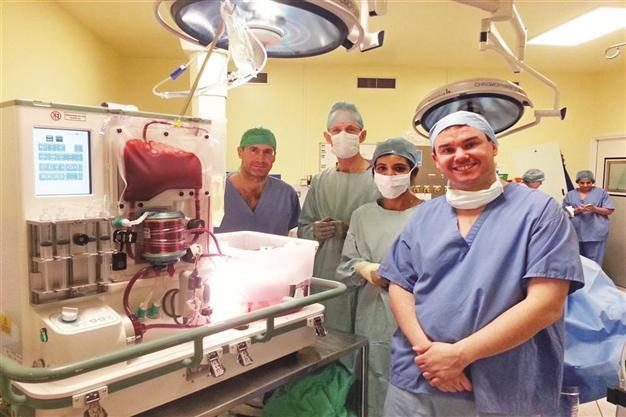Liver kept alive outside body in medical first
LONDON - Reuters

The King’s College Hospital and OrganOx team pose following the connection of the first human liver for transplant onto the OrganOx Metra device. REUTERS photo
A donated human liver has been kept alive, warm and functioning outside a human being on a newly-developed machine and then successfully transplanted into patients in a world medical first.
A British team of doctors, engineers and surgeons announcing the achievement on March 15 said it could be common practice in hospitals across the developed world within a few years, up to doubling the number of livers available for transplant.
So far the procedure has been performed on two patients on Britain’s liver transplant waiting list and both are making excellent recoveries, the medical team told a news conference.
’Cold, grey liver flushing with color ‘“It was astounding to see an initially cold, grey liver flushing with color once hooked up to our machine and performing as it would within the body,” said Constantin Coussios, a professor of biomedical engineering at Oxford University and one of the machine’s co-inventors.
“What was even more amazing was to see the same liver transplanted into a patient who is now walking around.”
Currently livers destined for transplant are kept “on ice” in a process which cools them to slow down their metabolism and does not keep them functioning as they would inside a body.
This system has worked for several decades, but can also often lead to livers becoming damaged and rendered unfit for use in patients who need them.
Surgeons say keeping livers “on ice” beyond 14 hours starts becoming risky, although they can last up to 20 hours.
The new technology, developed by Coussios together with Peter Friend, director of the Oxford Transplant Centre, preserves the liver at body temperature and “perfuses” it - supplying it with oxygenated red blood cells to keep it alive.
“This device is the very first completely automated liver perfusion device of its kind,” Coussios said. “These first clinical cases confirm that we can support human livers outside the body, keep them alive and functioning on our machine and then, hours later, successfully transplant them into a patient.”
